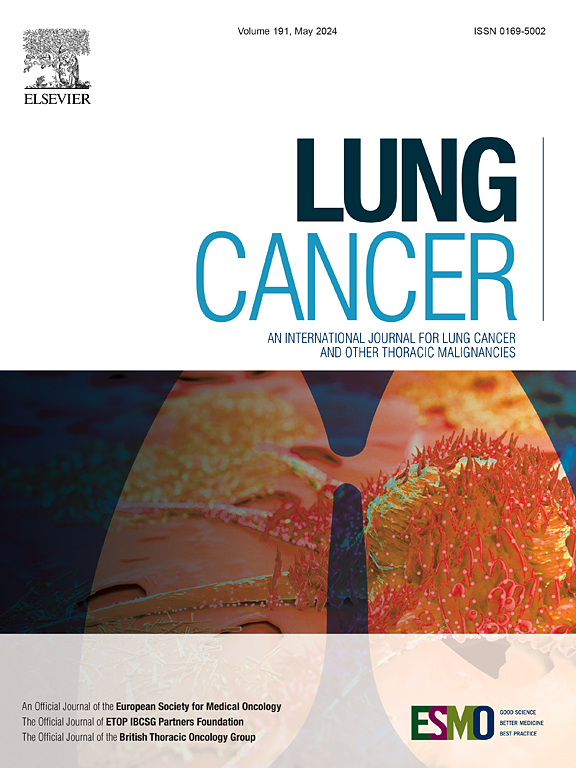肺癌切除患者的放射学随访:我们应该减少辐射照射吗?
IF 4.4
2区 医学
Q1 ONCOLOGY
引用次数: 0
摘要
导言:肺类癌原发切除术后的复发率很低(约为 10%)。然而,由于晚期复发的风险,一般建议进行长期放射学随访。方法评估了根据 ENETS、ESMO 和 CommNETs-NANETS 指南进行放射学随访的频率和方式。采用与性别和年龄相关的风险因素,估算了根据指南进行的累积辐射照射以及随后增加的终生癌症风险。结果 在 706 名参考患者中,有 32 人(4.5%)年龄在 18-30 岁之间。在中位随访127个月后,确诊时年龄为18-30岁的患者无一复发。根据 ENETS 和 ESMO 指南,这些患者在 40 岁时因随访而增加的辐射量分别为 140-308 mSv 和 35-42 mSv。结论对于切除类癌且复发风险较低的年轻患者,值得探索个性化、较少范围的随访,以减少辐射照射和相应的癌症诱发风险。有必要使用预测性生物标志物来进行个性化随访。本文章由计算机程序翻译,如有差异,请以英文原文为准。
Radiological follow-up in patients with resected pulmonary carcinoids: Should we reduce radiation exposure?
Introduction
After primary resection of pulmonary carcinoids, the recurrence rate is low (approximately 10 %). However, long-term radiological follow-up is generally recommended due to the risk of late recurrence. This must be weighed against risk of radiation-induced cancer, particularly in young patients.
Methods
The frequency and modality of radiological follow-up according to the ENETS, ESMO, and CommNETs-NANETS guidelines were assessed. Cumulative radiation exposure per guideline and subsequent increased lifetime cancer risk were estimated using sex- and age-dependent risk factors. Data from the Netherlands Cancer Registry (2003–2012) of adults with resected pulmonary carcinoids were used as a reference.
Results
Of 706 reference patients, 32 (4.5 %) were 18–30 years (y). After median follow-up of 127 months, none of the patients aged 18-30y at diagnosis developed recurrence. For these patients, the additional radiation exposure at the age of 40y due to follow-up ranges from 140-308 mSv following ENETS and 35–42 mSv following ESMO guidelines. The additional risk of death due to carcinogenic effects ranged from 0.7 % (male 30y) to 3.1 % (female 18y) following ENETS and 0.2 % (male) to 0.4 % (female) following ESMO guidelines.
Conclusions
Individualised, less extensive follow-up for young patients with resected carcinoids and a low risk of recurrence are worth exploring to decrease radiation exposure and the corresponding risk of cancer induction. The use of predictive biomarkers to personalise follow-up is warranted.
求助全文
通过发布文献求助,成功后即可免费获取论文全文。
去求助
来源期刊

Lung Cancer
医学-呼吸系统
CiteScore
9.40
自引率
3.80%
发文量
407
审稿时长
25 days
期刊介绍:
Lung Cancer is an international publication covering the clinical, translational and basic science of malignancies of the lung and chest region.Original research articles, early reports, review articles, editorials and correspondence covering the prevention, epidemiology and etiology, basic biology, pathology, clinical assessment, surgery, chemotherapy, radiotherapy, combined treatment modalities, other treatment modalities and outcomes of lung cancer are welcome.
 求助内容:
求助内容: 应助结果提醒方式:
应助结果提醒方式:


